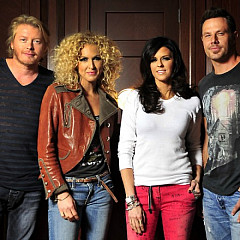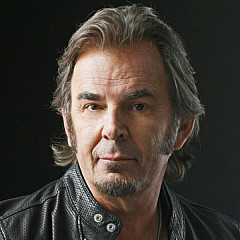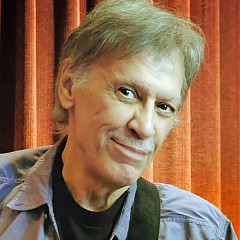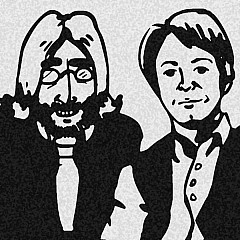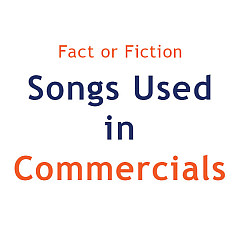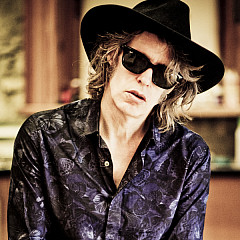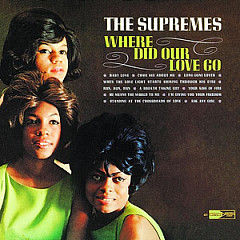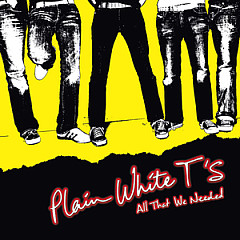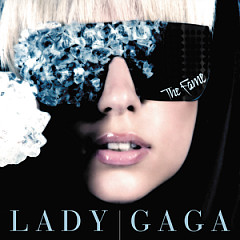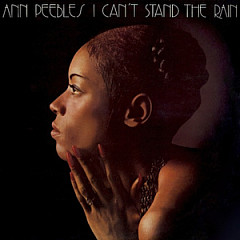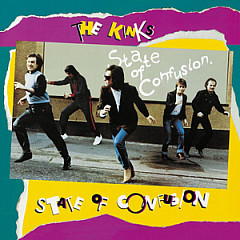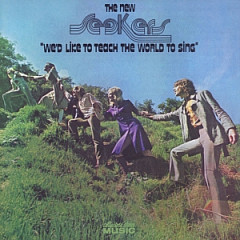
Sancious played on their first album, Greetings from Asbury Park, N.J., but moved to Virginia and didn't join them on their subsequent tour. He returned, fully formed, for their second album, The Wild, the Innocent & the E Street Shuffle, adding jazz inflections and rich textures to tracks like "New York City Serenade" and "It's Hard To Be A Saint In The City."
After touring that album, Sancious recorded one more song with Springsteen - "Born To Run" - then took an offer from Epic Records (a division of Springsteen's label, Columbia) to form his own band, Tone. For decades now he's been both a top-tier recording artist and a first-call session player, touring with some of the best in the business. In this interview, he talks about performing "Layla" with Eric Clapton (guitar and piano!), "In Your Eyes" with Peter Gabriel, and "Kiss From A Rose" with Seal.
His latest project is a solo album called Eyes Wide Open, which includes four songs he sings on, his lyrical catharsis from the past four years. We start by going a few layers deep into how he makes music, which involves a bit of quantum physics.
David Sancious: You don't really go about creating a song, the song goes about creating you. Are you familiar with any of the theories about quantum physics at all?
Songfacts: No.
Sancious: Ok, part of what quantum physics postulates is that everything that we think is free will, every action, the impulse for that actually comes milliseconds before anything happens. So, it looks like I'm writing a song, but I just end up being a channel for this thing to come into the world, and it ends up writing me.
And to anyone who is trying to write songs, the process makes you better. As you go through this mysterious process with these ideas or feelings, it comes into you and sort of takes shape - you end up being a better musician and a better composer. But it looks like it's you that's doing something, but actually, it isn't - it's something that's using you as an instrument to come into the third dimension.
Songfacts: Do you believe that whatever it is that is using you as an instrument is different for different people?
Sancious: I think the essence is the same. It's the same invisible energy, but the expression is different for different people. The people are the sort of filters.
Keith Jarrett once said something about this. A person ends up being a kind of filter for something to come into the world, and it's like the music picks you because you're just the right person for this particular expression of beauty to come through. Yeah, it's the same energy, but it's expressed differently through different people, because we are all essentially the same but we're different personalities with different energies.
Songfacts: I wonder if musicians have a certain way of tapping into that energy, which makes you the kind of person who can be in a room creating a song or on stage and understand that type of almost hidden language?
Sancious: Yes. Absolutely. There's something about it - once you become comfortable with that, you can recognize it in someone else and someone else can recognize it in you, and it becomes a sort of shorthand where there's a whole lot of understanding musically without a conversation with words.1
Songfacts: So, what do you do to put yourself in a position to receive this information?
Sancious: Basically, you just have to be open. You have to relax, you have to literally just be open to what can happen.
For instance, when I start something with music, whether it's a guitar or piano, I don't always sit down with a concrete idea, especially if I'm just trying out ideas, not playing a piece of music that I already know. There's a point where I turn on the instrument and everything is on in the studio, and I just touch the thing for the first time, and then that inspires the next touch and then the next touch.
That's what improvisation is really. When you're improvising you're not working on something that you've worked out before, you're literally just letting this energy direct where your hands go and what's the next chord and what's the next note, and it's all so fast, it's at the speed of thought. It's super, super-fast, and you can't break it down to understand it because it's just flowing through you and there's no room for thinking.
Songfacts: Let's take a specific example. Let's talk about the title track to Eyes Wide Open. Take me through putting that song together.
As far as it becoming a lyrical thing, when Donald Trump won the election in 2016 I was really motivated to finish this project and say something about the state of our society and the world, and then those lyrics just came. It was during the heyday of double-speak when you had people like Kellyanne Conway talking about how there's facts and then there's alternative facts - that kind of madness. I wanted to say something against all that and suggest that everyone look very closely at what's really happening and not the sort of distortions that we've been having to deal with for the last four years.
Songfacts: What is the most musically complex song you've worked on for another artist?
Sancious: Ooh, wow, that's a good question. Some years ago I was part of an ensemble for a project around Major League Baseball for this producer from Los Angeles who specialized in doing sports projects with musicians. Tony Levin was the bass player, I was on keyboards, and there was a saxophone player named David Sanchez - it was actually S-A-N-C-H-E-Z, the way mine gets mispronounced a lot.3 It was really fun and everyone had to bring a song. I forget what song I contributed to it, but David is an excellent jazz saxophonist - he's really first class - and he brought this song for us to learn, and we didn't have a lot of rehearsal time - I think we only had maybe two hours with a bunch of other music to learn, and we really had a hard time with it. It was just complex in a funny kind of way. Rhythmically, the drummer had a hard time with it, harmonically it was a bit challenging. We got through it, but I'm gonna say that stands out as one we really had to struggle with.
He gave us a recording of it because he had recorded it with his band, and he and his band had been together for a while, so these guys just poured it out like water. But if you weren't really familiar with it, it was challenging.
Songfacts: Yeah, I'm wondering what you even have to work with when you go to a studio and somebody brings you a song.
Sancious: Well, if it's something like that you've got charts. Stuff is written out - anything from a formal notation chart or a chord chart or a combination of both. Music like that, especially if it's a jazz thing, it'll be a combination of chords and actual notation of your part, and you use that as the foundation and then find spaces for your own self-expression. If the chord is E-minor, you might do a different voicing of E-minor than is on the page.
But there are a lot of musicians who don't write or read music, so usually someone brings some sort of demo version of it, or they're able to sit at a piano or a guitar and just play it for you, and then you join in. Years ago, when I played with Bruce Springsteen, that's how he taught me songs. He would sit at the piano and I would sit at his right-hand side and just watch him play through the song one time. Then the second time I could just visually see what the chords were, because those are not harmonically complex songs - they're more verbally complex. Songs like Bob Dylan or a lot of folk songs, usually there's four to six chords, maybe a little more.
So, he would play through it once and I would watch him, and the next time I would join in my right hand and play an octave above him. I would sort of get it, and then we would swap: I would sit at the piano and play it in the right register, and then he would sit on my right-hand side and check it out.
Songfacts: How did you put together "Rosalita"?
Sancious: "Rosalita" was like that, but he was playing guitar on that. That's something he showed us on guitar and he wanted me to play organ on that one. I used to go back and forth between playing piano on some songs and organ on others. But we had a lot of experience playing that in clubs. We really played that song live a lot before we recorded it.
 The back cover of The Wild, the Innocent & the E Street Shuffle. Shoes optional.
The back cover of The Wild, the Innocent & the E Street Shuffle. Shoes optional.Sancious: That is the energy of six young guys very enthusiastic about playing music - that's what comes across on the record. And the song itself is a very spirited, positive song, an old-fashioned kind of '60s, R&B-ish, fun song. It's a great, fun song to play.
Songfacts: How about "Born To Run"? Was that also a song you were doing live before you did it in the studio?
Sancious: It was recorded for the sessions for The Wild, the Innocent & the E Street Shuffle but it wasn't finished in time - Bruce was still writing it. He rewrote the lyrics about three or four times, and there are so many versions of studio overdubs and stuff that we did. We probably played it live at least a few times before we recorded it.
Songfacts: I asked you the question about the musically complex song that you worked on in the studio. How about the most musically complex song that you had to recreate live for another artist?
Sancious: A couple of the songs from Soul Cages, because there are a few keyboard overdubs in there and I had to figure out a way to do all the keyboard overdubs live, in real-time - there's no pre-recorded parts you're hearing. So some of the set-ups for the songs on Soul Cages were challenging.
I just thought of a better example actually...
I'm gonna say Peter Gabriel, when we did the So tour there was a song in the set called "The Family And The Fishing Net." It's a fantastic song - it's one of my favorites to play with him because it's like a movie with the lyrics and the mood and everything - it's a totally cinematic song. And there's a lot of things that have to happen exactly on cue and a bunch of different sonic sound shifts. It was pretty interesting to put it together in rehearsal and I remember it took Peter and I together a minute to be clear on where we were coming in and where we're not playing, but we got it together. I loved playing that song, but it was a very specific little piece of music.
Songfacts: When you did the So tour, did Peter Gabriel bring a horn section along?
Sancious: No, not for the original So tour.
Songfacts: So was it your job to recreate the horn sections on songs like "Sledgehammer"?
Sancious: Yes, that's exactly what I did, and all that was played live.
This was the early days of sampling, so a lot of devices that exist now didn't even exist then, but you could sample, and he sampled the notes from the original horn section - The Memphis Horns. But there were no phrases recorded. We took the actual notes from the horns in parts, and then I assigned them to part of the keyboard, so it was up to me to figure out how much of the keyboard that sound section would take up. There are about four different horn parts and different slides and punctuations and things that happened, so I had to spread that out over the length of the 88-note keyboard. And then there's also the organ sounds in it, and a shakuhachi flute sound I had to play. It's fun to set up and a minute to program it, but every time you heard that horn section, that's me physically playing on the instrument, and with the horn samples, that was the real sound.
Songfacts: And this is 1986 we're talking about?
Sancious: Exactly right. In the early days of sampling we used Akai samplers that had floppy disks - you had to put a floppy disk in these things. And we had so many samples that it took two Akai samplers on top of each other to give me all the sounds that I would need for a particular song. So during the set, my technician would be next to my keyboard rig and he would pop in the samples for, say, "Sledgehammer," but you had to wait for it to load, and Peter would have to kill time at the microphone. He would glance back at me and I had to give him the high sign to say, "Yeah, you can start the song now because all the samples are ready to go."
It was really something, man. Pulling that tour off technologically was a real feat back in the analog-digital transition days where you didn't have the kind of stuff we have now.
Songfacts: Well this was all very new, and some keyboard players took the approach of rejecting the whole synthesizer thing, but you went the other direction and really embraced it. Can you talk about making that transition and what that was like for you?
 Sancious: I remember talking to Jan Hammer about this. I started playing piano when I was 6 years old, and I used to dream about an instrument that could bend notes and make vibrato. I used to think it would be so cool if you could do it with an instrument, so when the synthesizer came along...
Sancious: I remember talking to Jan Hammer about this. I started playing piano when I was 6 years old, and I used to dream about an instrument that could bend notes and make vibrato. I used to think it would be so cool if you could do it with an instrument, so when the synthesizer came along...The first one was a Minimoog, and you could only play one note at a time - you couldn't play chords on the thing. But the first time I heard it was in a recording studio in Richmond, Virginia, when I was living down there for a while. There was a band who had come in to do a record and they had left it because they were coming in for a session in the morning. The engineer said, "Have you seen this thing yet? Check it out."
And the first time I touched that thing I was like, "This is brilliant." I started doing things with the pitch wheel and modulation and then shaping the different sounds. So I love the synthesizer and how it's developed in my lifetime. Now you have a 128-note polyphony, all kinds of multiple methods of synthesis, you can do anything with it. I totally embrace the synthesizer as an instrument. We're really fortunate to be alive at a time where it's possible.
Songfacts: The Police didn't use a lot of keyboards, but when you joined Sting, he sure put you to good use. Let's take a specific song that you did with Sting: "Fields Of Gold." Tell me about putting that together.
Sancious: "Fields Of Gold" is really a live, in-the-studio recording - there's actually no overdubs on it. It's a really simple song.
Sting had a pretty simple demo. He played it on guitar for us and said he wanted a really soft synthesizer pad. It's not meant to sound exactly like a string section or anything, it's just really a background. So that's the four of us - Dominic Miller, Vinnie Colaiuta, Sting, and myself in the studio - and I think the synthesizer was a Roland from back in the day. That was super simple in the studio.
But we also had to rearrange a lot of The Police songs, like "King Of Pain." That was an example where I could do all those keyboard parts - and there's a real kind of staccato piano part that he does - and I had to make it a little bigger. I had a string pad, I had an organ sound if he wanted it. But he was very keen on expanding, taking a different look at those songs, like "Driven To Tears" and "King Of Pain." We did quite a few of those Police songs when we toured on Ten Summoner's Tales and Soul Cages.
Songfacts: A lot of those Police songs get those crazy sounds from Andy Summers with his guitar, and then it sounds like you had to find a way to get a lot of those sounds out live when you did them.
Sancious: Well, some of that, but Dominic Miller had the guitar stuff covered. Anything that Andy did on a song, Dominic could easily cover that. Occasionally there were parts where I would have to do like a second guitar part, but I'd say 99% of any sort of guitaring live, that was coming from Dominic, and my job was everything else - all the horn sounds, string sounds, organs, pianos, marimbas, whatever was needed.
Songfacts: When you think about the whole synthesizer progression, one of the guys that comes to mind is Trevor Horn, who you worked with on the Seal album Human Being. Can you talk about working with him and working with Seal?
Sancious: Working with Seal, I really enjoyed it. I wished it would've gone on a bit longer.4 And working with Trevor I really enjoyed as well - he flew me to London to redo some keyboard parts on that Human Being album because we had actually finished it with another producer - Stewart Levine - and then the record company, for some reason, wasn't happy and it went back to Trevor. He flew over and I was in London for maybe two or three days and he said, "Yours were some of the only parts on the record that I liked," so he asked me to redo them or add anything else to them. I found him very easy to work with and very easy to communicate ideas with.
Songfacts: Tell me about creating some of those Seal songs on stage. Some of his famous songs like "Kiss From A Rose" and "Crazy."
Sancious: It's the same method. Whenever I play live, I always use an 88-note weighted-action keyboard. It gives me the ability to use my pianistic technique and really enjoy the full dynamic range, and also the 88 notes gives me more range to create sound maps, because every song on a tour - whether it's for Sting, Peter Gabriel, Seal or even myself - every song will have its own map on the synthesizer and gets saved into the machine, so there's a list you can scroll through. The next song comes up and you hit the name of the song and then pow, everything jumps to that song.
Part of the rehearsal job is you have to remember what the map is, because especially back in those days, the map is not displayed visually in a meaningful way for you to see while you're playing. You have to remember where the string sound stops and where the piano sound begins and where the horn parts are, and all that kind of stuff. But you get all that together in the process, and for tours like that, you have weeks of rehearsal so it's fun.
Songfacts: What was "Kiss From A Rose" like to play live?
Sancious: Oh man, it was great fun because first of all, I love the song. I thought it was a really fantastic song when it came out, even before I met him and got to play with him. It was beautiful.
With Seal, there weren't quite so many sounds to recreate live as with, say, Peter Gabriel or sometimes Sting, so it was fairly easy to recreate every overdub on that record between what I was doing and what the guitar player was doing. So it was fun. It was like a big sonic bath of beautiful sounds.
And the band was fantastic. We had Brian Blade on drums, Tony Levin on bass, Mike Landau on guitar, and two great background singers in Paul Mabin and Mike Harvey. The three of those guys - Seal, Paul Mabin, and Mike Harvey - sang so great together live. We used to have a vocal rehearsal after the band rehearsal, just the three of them and me at the piano to go over harmonies and stuff, and that was a treat.
Songfacts: Did you ever find out from the singer what the songs were about before you performed or recorded them?
Sancious: Yes. In the course of being with someone and learning from them and talking with them, you're having dinner and lunch and flying on airplanes, you end up finding out a lot of stuff. You end up finding out what they mean by the song or why they wrote it or what a particular lyric means to them. Yeah.
Songfacts: Did you glean any insights from Seal on what any of his songs mean to him?
Sancious: Well, like many people, I thought that the lyric he was singing was "kiss from a rose on a grave," and it's not, it's "kiss from a rose on a gray." The color gray. He explained that to me. It was a poetic thing, just a little taste of poetry that happened to sound like something else, so that was interesting. We were having lunch somewhere one day and he explained it to me.
Songfacts: Just going back to Peter Gabriel for a minute. Tell me about how you put together "Red Rain" in a live performance.
Sancious: The same process: identify the keyboard sounds or the string sounds or anything that's going to come from the keyboard sounds, map it out, and rehearse it. In that song there were two keyboards going because Peter was playing a piano sound with a chorus on it and a time delay and he's singing at his keyboard station, and I'm playing keyboards. I'm playing I think two string sounds and some other special little synthy sound that I can't remember right now. But we just coordinated.
Everything gets solved in rehearsal, and the rehearsal will come to a standstill if we have a problem and we can't figure out something, because there's a stage where you're learning stuff and there's a part where somebody might harmonically have the wrong chord or the wrong bass note or the wrong drumbeat, and that gets identified quickly. Then you hit that stage when all the sounds are right and you know what the chords are and everything.
And everyone collectively has to play it correctly - that's another thing. There might be something where someone doesn't understand where to come in. That's when you stop and talk about it for a second, and then you figure it out. Everything gets fixed in rehearsal.
Songfacts: On a Peter Gabriel show where everything is very choreographed, is it pretty much the same every night?
Sancious: There's a part of it that's pretty much the same, there's a part of it that's not. It's not as open for improvisation because that music at that level needs to be played right, but then needs to be played with emotion and needs to be played with feeling and purpose, and there are points in it where you can do different things. For instance, the song "In Your Eyes," the live version is another example of how things get broadened or developed in rehearsal. On the original So tour back in '86, we were rehearsing the song and Peter said he wanted to extend the ending. There was going to be a break where I'd just play something, make up something for like eight bars. It's just a drumbeat and piano. Manu Katché is playing the drums and would give me a signal to come back in.
Songfacts: It's just crazy to look at the artists you've worked with and see that they are the absolute top-tier live performers. Not sure how many people have seen Seal in concert, but he's amazing.
Sancious: Yeah, I've been very fortunate to work with some fantastic people.
Songfacts: What was it like recording with Aretha Franklin?
Sancious: It was brief. Most of the record was done and I got called in to do an overdub. I met her, and it was just amazing to be in the same space as her.
That album cover was an Andy Warhol. Before my father passed away, I got to take the record to my dad and say, "Hey Dad, I'm on an Aretha Franklin record!"
 The 1986 Aretha album, which David played on. Cover by Warhol.
The 1986 Aretha album, which David played on. Cover by Warhol.I've gotten to work with all these people who inspired me. People like Jack Bruce and Eric Clapton. Eric's one of the people that inspired me to play electric guitar. I think about it sometimes and I don't know if I could've even imagined it any better.
Songfacts: I was thinking of Eric Clapton's career and how there weren't a lot of keyboards in it except in Derek & the Dominos with Bobby Whitlock, who was that incredible keyboard guy. Here you are so many years later touring with Eric Clapton and you get to do "Layla" on stage. Can you talk about working with Eric and doing that song?
Sancious: With that song, not only did I get to do the famous piano part, but he asked me to play guitar on it as well. When we were rehearsing the song, I got the piano part together and at the end of a rehearsal, he said, "David, that's the nicest anyone's ever played that part in a long time." I said, "Well, thanks, but I'm just playing it." He said, "Usually people take it as an opportunity to be real flowery and use it as a feature for the piano." I just played it like the original melody and he really liked that.
But he didn't want to sing and play that guitar riff at the same time, and Andy Fairweather Low, who was also playing guitar, was on some different guitar part, so he asked me to do the riff, the lead part. So when the song started, it was two guitars and then he starts singing, "What do you do when you get lonely," and it was me doing the riffs in between what he would do on the record version. I would do these blues riffs in between his vocals. So for most of the song I'm on guitar, and then when it came to a point where it's repeating and he's soloing, I would take off my guitar, hand it to the technician, and make my way back to the keyboard, then come in with that whole other part of the song. It was a trip for me not only to play the song but to play the guitar in it as well, to get to do some little blues licks and then play piano in the end. It was really incredible.
Songfacts: What's one of the lesser-known albums you played on that is really dear to your heart?
Sancious: Of another artist, it's a record called 10 Cola Nuts by an African artist named Mory Kanté. It's a gorgeous record.
It was one of the first times I got hired as a producer. This French record company called me up and asked me if I would come over and produce his record. He plays the kora, which has a kind of sitar shape, but it's got a bunch of strings, like an African harp. He sings, and he's got an incredible voice. It's gorgeous and it's all in African, I think in Swahili. But that's a beautiful record. Not a lot of people know about it, but I'm very proud of it. I played on it and I produced it.
Songfacts: Along those lines, what's one of your works, whether it's with Tone or one of your other projects, that is really meaningful to you?
Sancious: I'm gonna say the current one: Eyes Wide Open. Musically it's pretty broad, and I'm very happy with it as a composer. It really covers a pretty good range, and the playing on it is fantastic. I couldn't have had better partners to do that part of it with.
Songfacts: Yeah, it's a terrific piece of work. I like the song "Urban Psalm," which sounds like it probably goes back aways. It doesn't sound like it was just recorded a few months ago.
Sancious: Very perceptive. That originally was written the year Rodney King got beat.
Songfacts: That was like 1991.
Sancious: Yup, that's when I originally wrote it. I remember that Sting, we were on a break from work and he rang me up because he couldn't believe what they were showing on the news. He was freaked out and calling his African-American friends in the States to make sure we were OK. He was just in shock about how that could be allowed to happen.
Songfacts: Yeah, it really paints a complete picture, it's really terrific.
I don't know if you've been in a TV studio, but earlier when you were talking about mapping your keyboard, it sounds very similar to what they do in TV, how the person working the switcher will have to program it a certain way and call up different settings during breaks.
Sancious: Yeah, it is similar. I have been in some control rooms in TV studios and that's a fascinating world. Yeah, essentially it's very similar to that.
Songfacts: It also takes an incredible degree of concentration. I think about how a drummer must be physically exhausted after a show, but you would be mentally shot after trying to keep that all straight.
Sancious: Yeah, you come off soaking wet. When I was programming the So tour, especially the reunion tour in 2012, I would program on my own, during the daytime. I would get through the rehearsal, have dinner by myself, and they had arranged to have a keyboard and the headphones and everything in my bedroom. I'd chill out for a little while and I'd program until like 10 or 11 at night to get ready for the next day's rehearsal, and that went on for a couple of weeks until everything was finally right.
Yeah, it's exhausting. it's fun work but you're right, it takes so much focus and there's a lot of decision making and a lot of creativity to find a way to do what you need to get done.
February 15, 2021
David's discography, along with more photos and other goodies, is at davidsancious.com
More interviews:
Bobby Whitlock
Amanda Palmer
Tony Banks
Footnotes:
- 1] Physics and music may be more closely connected than it seems, especially among musicians who synch particularly well with other players. The bass player Scott Edwards, who played with Stevie Wonder, Donna Summer, Glen Campbell and many others, was a physics major at Morehouse. (back)
- 2] David lives in Hawaii, making his offer to hang out and make music rather appealing. (back)
- 3] David pronounces his last name "sank-shus" (back)
- 4] Seal's 1999 tour in support of Human Being was cut short when no hits emerged from the album. David, unexpectedly out of work, made some calls and picked up with Eric Clapton. (back)
More Songwriter Interviews

